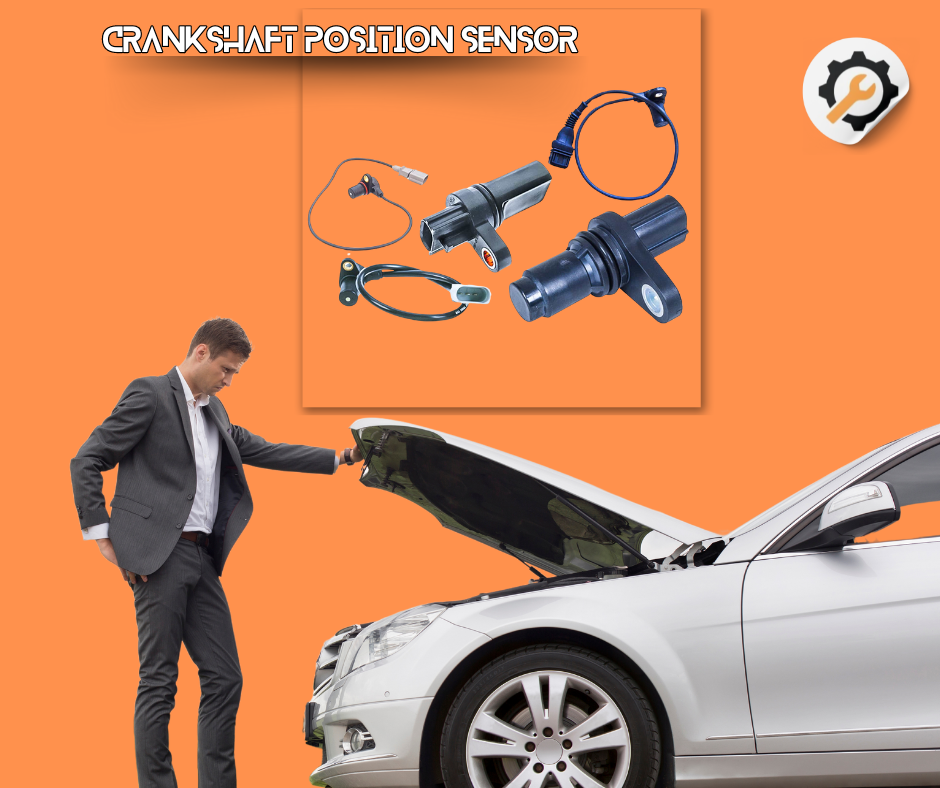The Role of the Crankshaft Position Sensor in Your Car – The Hidden Power Behind Your Engine’s Timing

Imagine you’re cruising along, your engine humming smoothly, and then suddenly, things feel off. Your engine sputters, your car hesitates, or worse—it stalls out of nowhere. The culprit? It could be your crankshaft position sensor, a small but absolutely critical part that keeps your engine in sync. Overlook this little device, and you could be headed for a breakdown that leaves you stranded. But what exactly does this sensor do, and how can you tell when it’s about to fail? Let’s dive into the world of the crankshaft position sensor and discover why it’s the unsung hero of your engine’s performance.
What Is the Crankshaft Position Sensor?
The crankshaft position sensor (CKP) is a crucial component that monitors the position and speed of your car’s crankshaft—the part responsible for turning your engine’s pistons and generating the power that propels your vehicle. The sensor sends precise information to the engine control unit (ECU), which adjusts the timing of fuel injection and ignition to ensure your engine runs smoothly.
In short, without this sensor, your engine’s timing would be a chaotic mess. Imagine trying to run a race with no idea when to start or how fast to go—it’s the same for your engine without the crankshaft sensor!
How It Works: Timing Is Everything
The crankshaft sensor measures the exact position of the crankshaft’s rotation and sends this data to your car’s ECU. This data tells the ECU when to ignite the fuel and air mixture in each cylinder, allowing your engine to run efficiently. It also helps regulate engine speed and ensures proper synchronization between the crankshaft and other components, like the camshaft.
Without accurate data from the crankshaft sensor, your engine wouldn’t know when to fire the spark plugs, when to inject fuel, or when to rotate the crankshaft. In essence, this sensor is like the maestro conducting the entire symphony of your engine’s performance.
Signs of a Failing Crankshaft Position Sensor
When the crankshaft position sensor starts to fail, it doesn’t hide for long. Here’s what to watch out for:
-
Engine Stalling
One of the most alarming signs of a failing crankshaft sensor is random engine stalling, especially when driving at low speeds. This happens because the ECU isn’t receiving accurate data on the crankshaft’s position, disrupting the engine’s timing and causing it to shut off unexpectedly. -
Difficulty Starting the Car
If your car struggles to start or refuses to start at all, it might be because the crankshaft sensor is failing. The engine requires precise timing to start, and without the sensor’s input, it can misfire or not start altogether. -
Check Engine Light
A failing crankshaft sensor often triggers the check engine light. While the light could be related to various issues, if you experience other symptoms like stalling or rough idling, the crankshaft sensor is a likely suspect. -
Engine Misfires and Poor Performance
When the crankshaft sensor isn’t providing accurate data, your engine’s timing will be off. This can result in misfires, reduced power, and sluggish acceleration. If your car feels like it’s hesitating or lacking power, it’s time to check the sensor. -
Irregular Idle
A faulty crankshaft sensor can lead to an unstable or rough idle. If your car feels shaky or the engine revs unexpectedly when idling, it could be a sign that the sensor is on its way out.
Why Addressing Crankshaft Sensor Issues Early Is Crucial
Ignoring a failing crankshaft sensor can lead to more serious engine problems down the road. Since the sensor directly affects engine timing, continued failure can cause damage to the engine’s internal components. Worse, if the sensor completely fails while driving, you could lose control over your vehicle as the engine shuts down suddenly.
Replacing the sensor early will not only save you from potentially costly repairs but also keep your engine running smoothly and safely. Plus, resolving this issue promptly ensures your vehicle maintains optimal fuel efficiency and performance.
How to Fix It
Replacing a crankshaft position sensor is usually a straightforward process, but it’s important to consult your mechanic or refer to your car’s manual to ensure the correct part is installed. At Sparesworld, we offer top-quality crankshaft sensors for a wide range of vehicles to help you avoid major engine issues. If you’re experiencing any of the warning signs, don’t wait until it’s too late—get your sensor checked and replaced before bigger problems arise.
Boost Your Engine’s Health with Sparesworld
The crankshaft position sensor may be small, but it has a massive impact on your engine’s performance. Don’t ignore the warning signs! Visit Sparesworld for all your crankshaft sensor needs and ensure your engine stays in perfect rhythm. Need help diagnosing or fixing the issue? Our team of experts is here to guide you, offering consultancy and advice to keep your engine running like new.
Keep your car performing at its best—check your crankshaft sensor today!

 Loading..
Loading..